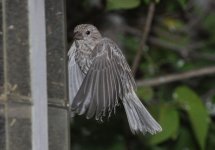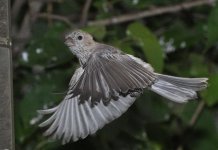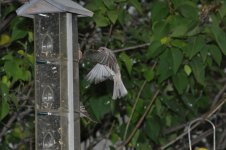redtail7
Well-known member
Hi
I have a D300 camera and I want to start taking photos of birds in flight. Also of birds at a feeder which hover momentarially before landing. Can anyone who takes these kind of pictures give me some idea of what settings to put my camera at to get a good picture. The lens I have is a 70-200 f2.8 VR. Thanks Tony
I have a D300 camera and I want to start taking photos of birds in flight. Also of birds at a feeder which hover momentarially before landing. Can anyone who takes these kind of pictures give me some idea of what settings to put my camera at to get a good picture. The lens I have is a 70-200 f2.8 VR. Thanks Tony







